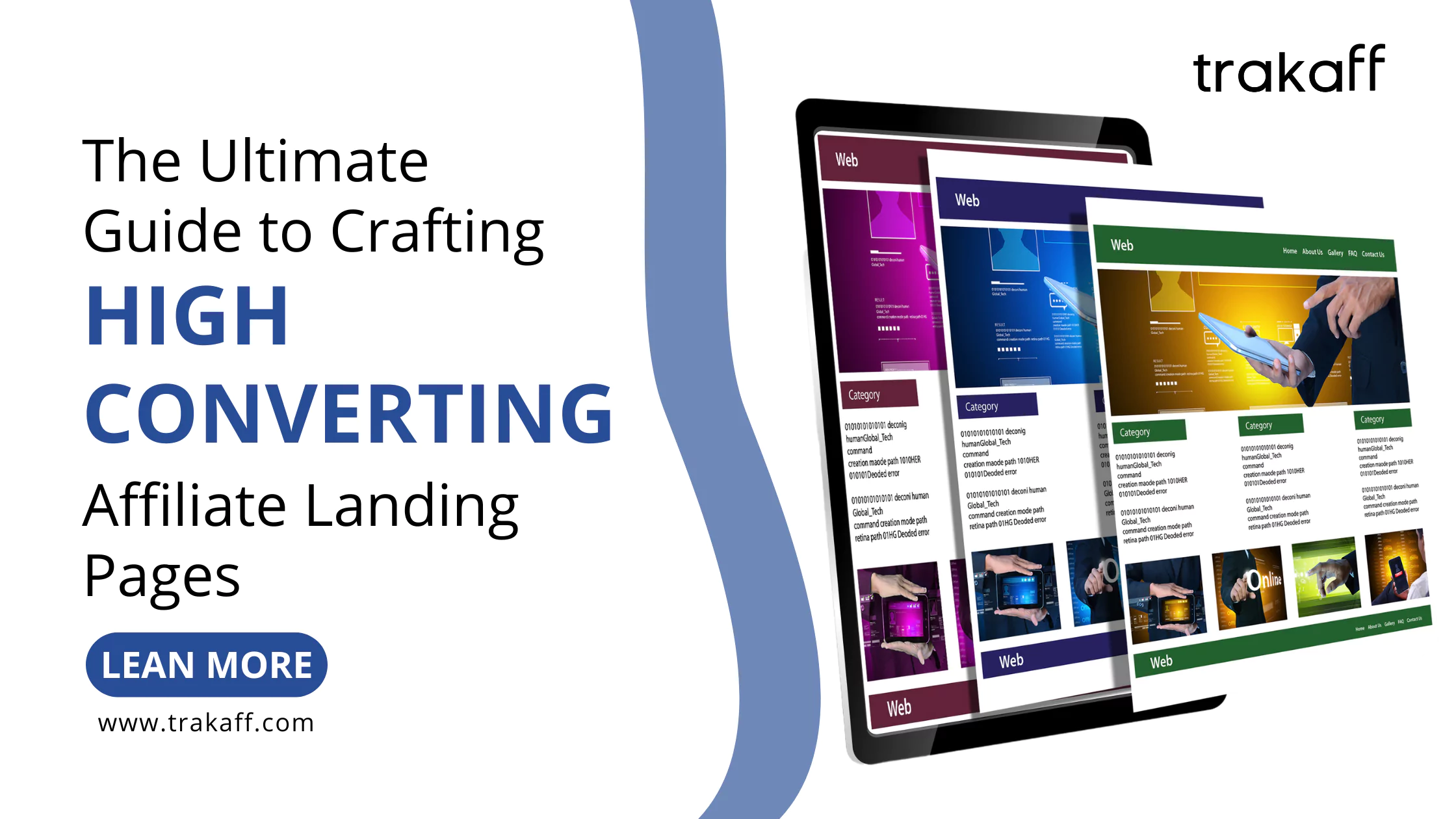In the realm of affiliate marketing, landing pages serve as crucial bridges connecting your traffic sources to the seller’s sales page. A well-crafted, high-converting affiliate landing page acts as a focused funnel, guiding your visitors towards a specific action – clicking your affiliate link and making a purchase. Unlike traditional websites with multiple navigation options, these landing pages minimize distractions and streamline the customer journey, ensuring that every element on the page serves the purpose of driving conversions. By focusing on a clear call to action and a seamless user experience, high-converting affiliate landing pages significantly increase the chances of turning visitors into buyers.
While some argue that affiliate marketing can function without landing pages, the most successful affiliates consistently utilize them for enhanced conversion rates. Think of it this way:
- Traffic Source (e.g., Facebook ad, social media post): You capture the initial attention of potential customers.
- Landing Page: You build interest, address objections, and pre-sell the product’s value.
- Affiliate Link: Your strategically placed link directs engaged visitors to the seller’s sales page.
- Sales Page: The seller, with their optimized sales content, closes the deal.
- Commission Earned: You reap the rewards of a successful conversion!
Even if you primarily rely on free traffic sources like social media, landing pages, often in the form of link-in-bio tools, remain invaluable for optimizing the user experience and maximizing conversions.
Key Elements of a High-Converting Affiliate Landing Pages
While landing pages come in various forms, be it blog posts, videos, or email opt-in forms, the most effective ones consistently incorporate these five essential elements:
1. The Attention-Grabbing Headline
Your headline is the first impression, the digital handshake that determines whether a visitor stays or bounces. Craft a headline that piques curiosity, addresses a pain point, and promises a desirable outcome.
Example: “Ivy League Discovery Reveals a Simple 17-Second Morning Ritual That Activates Your Body’s Hidden Fat Loss Switch, Melting 1 Pound of Fat Every 43 Hours!”
This headline skillfully combines:
- Intrigue: “Hidden fat loss switch” sparks curiosity and a desire to learn more.
- Time-Bound Solution: “17-second morning ritual” and “one pound every 43 hours” provide a sense of ease and quick results.
- Social Proof: “Ivy League discovery” leverages trust and authority.
- Desired Outcome: “Melt one pound of fat” clearly states the benefit.
2. Compelling Copy That Tells a Story
Expand on the intrigue of your headline with concise, benefit-driven copy. Address potential customer objections and further pique their curiosity without revealing all the details. The goal is to create a desire to learn more and click your affiliate link.
Example: “Megan C, a busy mom of three, struggled with stubborn belly fat for years…until she discovered this groundbreaking 17-second ritual. Now, she’s effortlessly shedding pounds without restrictive diets or grueling workouts!”
This copy effectively:
- Introduces a relatable character: Megan C embodies the target audience’s struggles.
- Highlights benefits: Emphasizes weight loss without restrictive measures.
- Uses outcome-driven language: Focuses on the desired result, not the product itself.
3. A Clear and Enticing Call to Action
Guide your visitors towards the desired action with a prominent and persuasive call to action (CTA). Whether it’s a button, a text hyperlink, or an image, your CTA should stand out and clearly convey what you want the visitor to do.
Example: “See How She Did It!” – This CTA, placed on a button or an image mimicking a video player, invites curiosity and encourages clicks.
4. Strategically Placed Affiliate Links
Embed your affiliate link within your CTA elements. This seamless integration ensures you get credit for every sale generated through your landing page. You can utilize link shorteners or forwarding domains to mask lengthy affiliate links, but remember to test them regularly to guarantee functionality.
5. Curiosity-Evoking Imagery
Use visuals that complement your story and further intrigue your audience, without revealing the product itself. For instance, use a screenshot from the seller’s sales video or a generic image representing the desired outcome.
Example: A picture of a woman looking fit and happy, combined with the “See How She Did It!” CTA button, reinforces the promise of effortless weight loss.
Crafting an Effective User Experience
To maximize your conversion rates, go beyond the core elements and prioritize user experience:
- Responsive Design: Ensure your landing page adapts seamlessly to various screen sizes and devices.
- Clear and Concise Language: Use easy-to-understand words and short sentences.
- Error-Free Content: Proofread meticulously and utilize grammar tools to ensure professionalism.
- Minimal Distractions: Avoid unnecessary links, pop-ups, or irrelevant content.
- Single Focus: Promote one solution per landing page to avoid overwhelming visitors.
- Synergy with Sales Page: Maintain consistency in messaging and design between your landing page and the seller’s sales page for a smooth transition.
Tools and Resources for Building Affiliate Landing Pages
Numerous landing page builders cater to affiliate marketers, offering user-friendly interfaces and pre-designed templates. Some popular options include:
- ClickBank Accelerator: Specifically designed for ClickBank affiliates, offering a range of templates and features tailored for affiliate marketing.
- Convertri: Known for its fast loading speeds and ease of use, with specific modules for affiliate marketing.
- GetResponse: Offers an intuitive drag-and-drop builder and a selection of templates suitable for various affiliate marketing goals.
Additionally, platforms like Canva can assist you in creating custom graphics and visuals to enhance your landing pages.
Conclusion
Building high-converting affiliate landing pages is a skill that blends creativity, strategy, and a deep understanding of your target audience. Remember, your goal is not to sell the product; that’s the seller’s job. Your role is to pique interest, build trust, and guide potential customers towards the solution you are promoting. By focusing on user experience and incorporating the core elements discussed above, you can craft landing pages that effectively convert visitors into loyal customers, boosting your affiliate marketing success.
